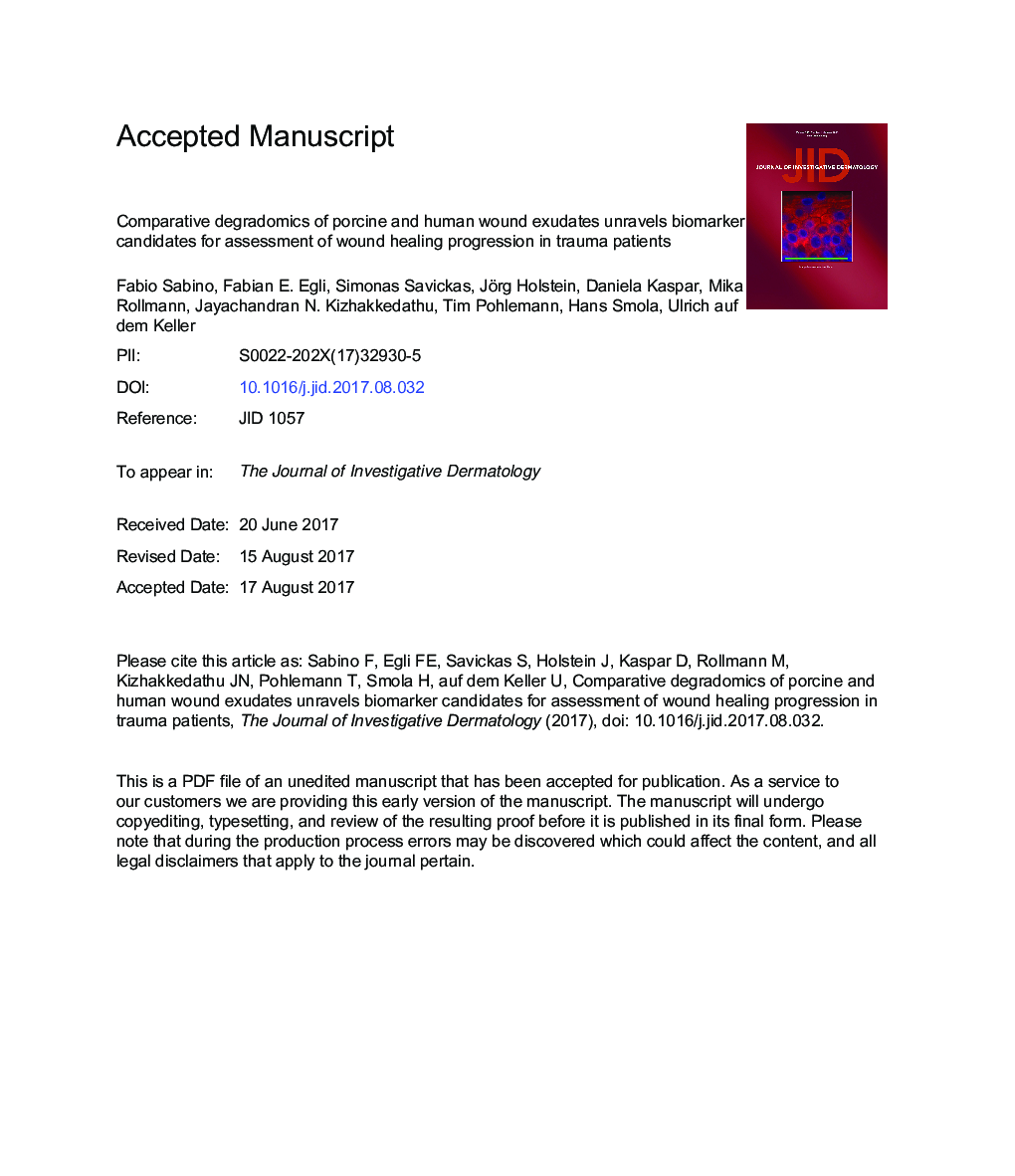| Article ID | Journal | Published Year | Pages | File Type |
|---|---|---|---|---|
| 8716177 | Journal of Investigative Dermatology | 2018 | 30 Pages |
Abstract
Impaired cutaneous wound healing is a major complication in elderly people and patients suffering from diabetes, the rate of which is rising in industrialized countries. Heterogeneity of clinical manifestations hampers effective molecular diagnostics and decisions for appropriate therapeutic regimens. Using a customized positional quantitative proteomics workflow, we have established a time-resolved proteome and N-terminome resource from wound exudates in a clinically relevant pig wound model that we exploited as a robust template to interpret a heterogeneous dataset from patients undergoing the same wound treatment. With zyxin, IQGA1, and HtrA1, this analysis and validation by targeted proteomics identified differential abundances and proteolytic processing of proteins of epidermal and dermal origin as prospective biomarker candidates for assessment of critical turning points in wound progression. Thus, we show the possibility of using a fine-tuned animal wound model to bridge the translational gap as a prerequisite for future extended clinical studies with large cohorts of individuals affected by healing impairments. Data are available via ProteomeXchange with identifier PXD006674.
Related Topics
Health Sciences
Medicine and Dentistry
Dermatology
Authors
Fabio Sabino, Fabian E. Egli, Simonas Savickas, Jörg Holstein, Daniela Kaspar, Mika Rollmann, Jayachandran N. Kizhakkedathu, Tim Pohlemann, Hans Smola, Ulrich auf dem Keller,
